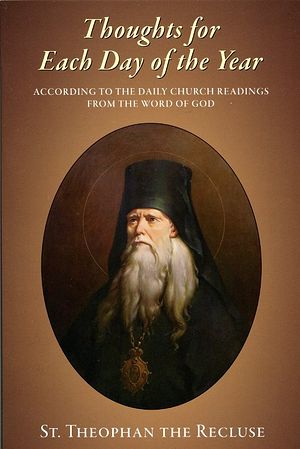

| Previous day | Next day |
| Old Style
May 16
|
Sunday |
New Style
May 29
|
| 5th Sunday of Pascha. Sunday of the Samaritan Woman. Tone 4. | Fast-free period.
|
![]() St. Theodore the Sanctified, disciple of St. Pachomius the Great (368).
St. Theodore the Sanctified, disciple of St. Pachomius the Great (368). ![]() Uncovering of the relics of St. Ephraim, founder of Perekom Monastery (Novgorod) (1545).
Uncovering of the relics of St. Ephraim, founder of Perekom Monastery (Novgorod) (1545).
Hieromartyr Alexander, bishop of Jerusalem (ca. 213-250). Blessed child Musa of Rome (5th c.). Martyrs Vitus (Guy), Modestus, and Crescentia, at Lucania (ca. 303). 44 Monk-martyrs of the monastery of St. Sabbas the Sanctified (614). St. George II, bishop of Mytilene (9th c.). Sts. Cassian (1537) and Lawrence (1548), abbots, of Komel Monastery (Vologda). New Martyr Vukasin of Klepats in Hercegovina (1943) (Серб.). St. Matthew the Wonderworker, hieromonk, of Yaransk (1927).
Hieromartyrs Abdiesus, bishop of Beth-Kashar, and Abdas, bishop of Kashkar, with them 16 priests, 9 deacons, 6 monks, and 7 virgins, in Persia (ca. 418). St. Bardas, founder of the monastery of the Forerunner in Petra, Constantinople (5th c.-6th c.). St. Brendan the Voyager, abbot of Clonfert (ca. 577). Martyr Peter of Blachernae (ca. 761). St. Thomas I, patriarch of Jerusalem (820). St. Nicholas I Mysticus, patriarch of Constantinople (925). New Hieromartyr Theodore, bishop of Vrsac at Banat, Serbia (1594). New Martyr Nicholas of Metsovo, at Trikala (1617). Martyrs Symeon, Isaac, and Bachthisoes, of Persia (339) (Gr. Cal).
Thoughts for Each Day of the Year
According to the Daily Church Readings from the Word of God
By St. Theophan the Recluse

Sunday of the Samaritan Woman. [Acts 11:19–26, 29–30; John 4:5–42]
The Samaritan’s woman fellow citizens said to her after two days with the Saviour in their midst, Now we believe not because of thy saying: for we have heard him ourselves, and know that this is indeed the Christ, the Saviour of the world (John 4:42). It happens this way with everyone. At first they are called to the Lord by an external word, or as for many now, simply by birth. But when they taste in practice what it is to live in the Lord, they no longer cleave to the Lord through their external affiliation with Christian society, but through their inner union with Him. It is necessary for all who are born in Christian societies to make this a law for themselves; that is, to not limit themselves to mere external affiliation with the Lord, but to seek to unite with Him inwardly, that they may always bear witness within themselves that they are standing in the truth. Why is this necessary? It is necessary to embody within oneself the truth of Christ. The truth of Christ is a restoration of what is fallen. Thus, put off the old man, which is corrupt according to deceitful lusts, and put on the new man, which is created after God in righteousness and true holiness (cf. Eph. 4:22–24), and you will know within yourself that the Lord Jesus Christ is in truth the Saviour—not only for the world, but also for you.


